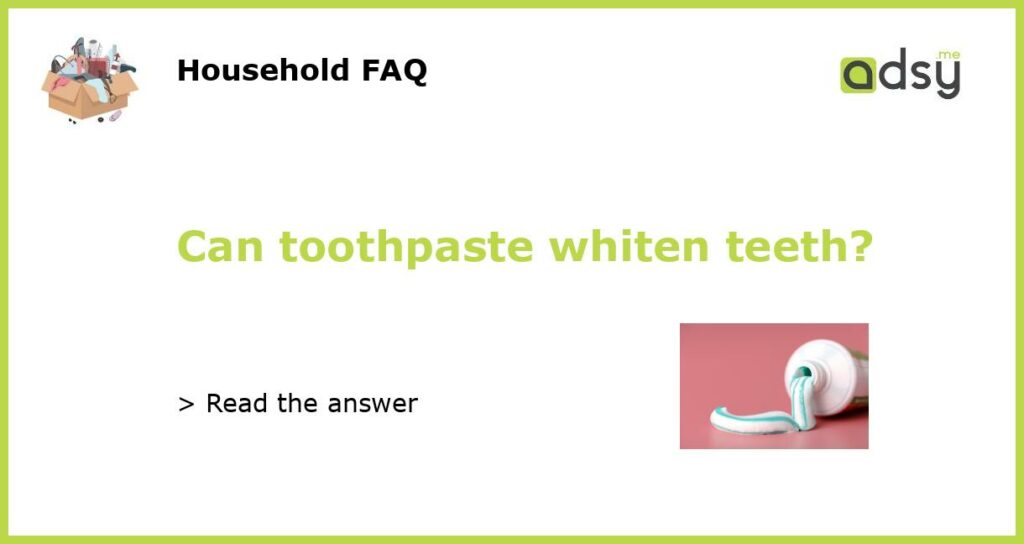Does Toothpaste Actually Whiten Teeth?
When it comes to oral hygiene and maintaining a healthy smile, toothpaste is a staple in everyone’s daily routine. But can toothpaste actually whiten teeth? Let’s delve into the science behind toothpaste and its whitening abilities.
The Role of Toothpaste
Before diving into teeth whitening, it’s important to understand the primary role of toothpaste. Toothpaste is designed to clean teeth, remove plaque, and freshen breath. It contains abrasive particles, such as silica or calcium carbonate, that help scrub away surface stains and food particles.
However, the main purpose of toothpaste is to deliver fluoride to the teeth. Fluoride is a mineral that helps prevent tooth decay and strengthens the tooth enamel. It remineralizes weakened areas and protects teeth from acid attacks caused by bacteria and sugars in the mouth.
Whitening Toothpaste: How Does It Work?
Whitening toothpaste is a popular choice for those seeking a brighter, whiter smile. These toothpastes often contain additional ingredients like hydrogen peroxide or carbamide peroxide, which have tooth whitening properties.
Hydrogen peroxide is a bleaching agent commonly used in teeth whitening treatments. When used in toothpaste, it helps break down stains and lighten the color of teeth. Carbamide peroxide, on the other hand, breaks down into hydrogen peroxide and urea, and is also effective in teeth whitening.
It’s important to note that whitening toothpaste can only remove surface stains. These stains are caused by external factors like coffee, tea, red wine, and tobacco. They are known as extrinsic stains and can be treated by using whitening toothpaste regularly.
Limitations of Toothpaste
While toothpaste can effectively remove surface stains and lighten the color of teeth, it has its limitations. Toothpaste cannot change the natural color of your teeth or remove deep, intrinsic stains. Intrinsic stains are caused by factors like genetics, aging, or certain medications. These stains require professional teeth whitening procedures to be effectively treated.
Moreover, overuse of whitening toothpaste can lead to tooth sensitivity. The abrasive particles in the toothpaste can wear down the enamel, making your teeth more susceptible to sensitivity. It’s important to follow the instructions and recommendations of your dentist when using whitening toothpaste.
Alternatives for Whiter Teeth
If you’re looking for a more significant change in the shade of your teeth, professional teeth whitening may be the best option. Dentists offer various treatments like in-office bleaching, custom-made whitening trays, and laser teeth whitening.
Another alternative for whiter teeth is at-home teeth whitening kits. These kits typically include custom-fitted trays and bleaching gels that can be used at home. While the results may not be as immediate as professional treatments, they can still provide noticeable whitening over time.
Lastly, maintaining good oral hygiene practices and avoiding foods and drinks that cause stains can help preserve a white smile. Regular visits to the dentist for professional cleanings can also help remove surface stains and keep your teeth looking their best.






